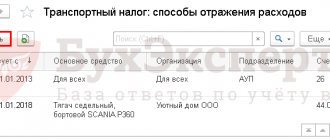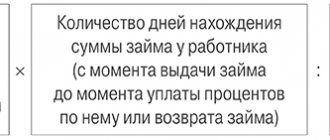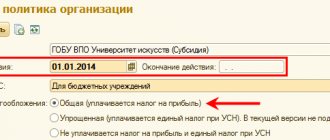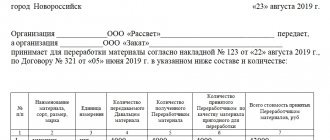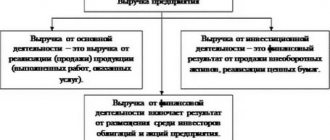The high motivational component of working in private companies is ensured by various methods of financial and non-material incentives (bonuses, bonuses, vouchers, personal discounts, etc.). Against this background, civil service, even having some special prestige, is still considered the most inconvenient for the development of an employee’s potential. To correct the material incentive system in the public sector, the concept of a personal increasing coefficient was developed. This is a method of rewarding employees for conscientious performance of duties, for an innovative approach to work, or for combining positions.
What is a personal increase factor (PPC)?
The Labor Code of the Russian Federation guarantees employees of budgetary enterprises the same working conditions and equal salaries for employees of the same level. But, such a clause to some extent demotivates staff and neutralizes financial incentives to work efficiently and diligently.
In order to introduce the possibility of financial incentives for employees for high-quality performance of their duties, it was decided to develop a system of personal bonuses taking into account an increasing coefficient to the salary. This increase in wages not only stimulates the growth of professional skills and quality of work, but also provides additional socio-economic protection.
In a number of cases, PPC is awarded to staff not only as a motivating component, but also as an incentive for working at high intensity (working at night, on weekends, etc.).
An increasing coefficient is a personal increase in salary, which can be set for a certain period (for a month, quarter or year). The calculation of this personal allowance must be included in the clause of the employment contract with the employee and established in the regulations on remuneration of state companies. This provision is developed in cooperation with the representative body of workers (trade union, etc.)
How is the enhancement factor applied?
Using an example, we can consider how the increase factor affects the accrual of vacation pay. Let's assume that an employee works at the enterprise during the entire billing period from May 2015 to April 2021. During this time, for six months his salary remained unchanged and amounted to 30,000 rubles. After this, the amount was increased to 32,000 rubles, and in February - to 34,000. No allowances or bonuses were awarded to the employee. He is going on vacation for 14 days.
- Finding the increase factor. The last salary increase was in February. This means that you need to find the ratio of this value to the amount of payments last month. From May to October the indicator is 34,000 / 30,000 = 1.13. From November to January the value will be 34,000 / 32,000 = 1.06.
- We index employee payments. For the period from May to October: 30,000 * 1.13 * 6 = 203,400; from November to January: 32,000 * 1.06 * 3 = 101,760.
- We find the total earnings: 203,400 + 101,760 + 34,000 * 3 = 407,160.
- We calculate the average daily earnings: 407,160 / 12 / 29.3 = 1,158.02.
- Now we calculate the amount of vacation pay: 1,158.02 * 14 = 16,212.28.
To calculate vacation pay, a coefficient is used that reflects the average number of days in a month. Previously, it was considered equal to 29.4, but in 2014, due to an increase in the number of days off, a new value was set - 29.3. Also, coefficients are required after salary increases. Indexation of average earnings is important for calculating vacation pay. It is worth considering that it is required when increasing wages throughout the enterprise or in its branch. The specific procedure for indexing is not established by law.
Recommended reading
Chart of accounts as the basis for organizing accounting
Calculation of vacation pay after maternity leave
In what areas is it common to accrue PPC to employees?
The increasing coefficient on salary is accrued mainly to employees of budgetary institutions. This type of incentive is intensively used in educational and health care enterprises, and especially in military units of federal or local significance, to financially reward mid-level employees for quality work and additional responsibilities (extracurricular work, extra lessons, night shifts).
But, government agencies in various areas can resort to calculating PPC for employees: in state museums, libraries, foundations, scientific institutes.
What laws and regulations govern the administration and withdrawal of PPCs?
An approximate provision approved by order of the Ministry of Health and Social Development of the Russian Federation No. 463 n dated August 28, 2008 is a by-law that establishes the right of employers to calculate a personal increasing coefficient to the salary.
Also, the nuances of assigning PPC are stipulated in a number of articles of the Labor Code of the Russian Federation: Art. 72, Art. 57, art. 135.
In turn, the accrual of an increasing coefficient does not contradict the requirements of Art. 22 of the Labor Code.
The amount of the PPC is calculated for the employee based on Article 152 of the Labor Code.
In the educational sphere, the right of employees to CPD is also considered in Presidential Decree No. 597 dated May 4, 2015 “On measures for the implementation of social policy.”
Which payments are subject to adjustment and which are not?
An increase in salary leads to changes in the benefits that depend on it. For this reason, adjustments must be made whenever tariff rates change. In addition, there are a number of payments that are not affected by the changes. These allowances are not subject to indexation. Their size is set in fixed amounts. These include:
- payments, the ratio of which to salary, tariff rate or monetary remuneration is established as a percentage or share,
- payments for which absolute values are established and used in calculating average earnings.
There are important facts to consider when making benefit adjustments. Firstly, indexation of earnings is only possible with a massive increase. In isolated cases, recalculation is not performed. Secondly, for part-time workers there is a general scheme for determining the final amount. Thirdly, the reduction in rates does not affect average earnings. Adjustments are provided only in case of increase. All indicators that must be taken into account when determining average earnings are taken in actual amounts.
When issuing vacation pay, the “three-day” rule applies, that is, it must be transferred to the employee no later than three days before the start of the vacation. The employee must be notified of the fact of the upcoming vacation at least fourteen days in advance. For violation of the established rules of labor legislation, various types of penalties and fines are provided. In some cases, criminal liability may be applied.
Timely recalculation of vacation pay when salaries increase will save the employer from paying compensation to employees in the future for incorrectly issued amounts during an audit. In most cases, the accountant is responsible for the accuracy of the data. It is he who is responsible for the correctness of the calculations made. Employees have the right to know what indicators the payments due to them consist of. If you have any questions, you can always contact the accounting department or your employer for clarification regarding accruals.
Conditions for applying PPC on employee salaries
A personal coefficient for the position held can be assigned to all employees who occupy positions that provide for categorization within the same salary.
PPK to the salary is assigned to employees to emphasize the level of their professional skills, the uniqueness of their skills, the importance of the work performed, the degree of independence and professional experience in the company.
It is recommended to assign PPC for length of service to employees who hold a position, depending on the total number of years that they have worked in federal government bodies or their territorial divisions.
Example of calculations for an incomplete billing period
Now let’s calculate payments for an employee who has been working in the company since May 2015. In May 2021, he plans to take a 14-day vacation. Moreover, in March 2021 he was on a business trip for 17 days, and in September 2015 he was on sick leave for 14 days. The amount he received for the entire period reached 500,000 rubles.
- In the case of this employee, the pay period is 12 months. Of these, 10 were fully worked; in September there was sick leave, and in March there was a business trip.
- We count days for full months. 29.3 * 10 = 293.
- Find the number of days in each partial month. In September, 14 days are sick leave, leaving 16 calendar days. We find the number of days for calculation using the formula 29.3 * 16 / 30 = 15.63. In March, the employee was on a business trip, which means the number of calendar days will be 31 – 17 = 14. The calculation includes 29.3 * 14 / 31 = 13.23. The total number of days is 15.63 + 13.23 = 28.86.
- We add the resulting values and find the number of days in the billing period: 293 + 28.86 = 321.86.
- We find the average payment per day by dividing the total payment by the number of days: 500,000 / 321.86 = 1,553.47.
- To calculate the amount of vacation pay, we multiply the average daily indicator and the number of days of rest 1,553.47 * 14 = 21,748.58.
PPK size recommended by law
It is considered legal to establish a maximum personal increasing coefficient for an employee’s salary of up to 2.0 units equal to the salary itself. A completely objective provision of the Regulations leaves the employer the right to calculate the amount of the increase for each specific employee within this legally prescribed range.
For employees of universities and premium research institutes, the maximum PPC size can be 3.0 in absolute size for specialists and senior academic staff.
Also, for heads of organizations whose activities directly depend on government subsidies and revenues, it is strongly recommended to abandon fixed PPC rates for employees. Because budget financing is a very unstable category of income; it can be cut, delayed, and sometimes cancelled. And employers do not have the right to unilaterally change the size of the PPC, unless otherwise agreed in the employment contract.
The state allows heads of government agencies to bonus staff very generously, almost double the salary (200% more), but the employer himself decides on the size of the coefficient for each employee based on the size of the wage fund.
What schemes for calculating PPC are most common in enterprises?
In the field of education and healthcare, it has been established that motivational payments, which include an increasing coefficient, must be set as a percentage of the salary. Considering that these payments are calculated for the complexity of the work performed, length of service, and the presence of the highest category, they are calculated by assessing the employee according to these criteria based on the accepted point system.
If an employee performs the duties of a temporarily absent second employee without being relieved of his own duties, the additional payment to him is made using an increasing coefficient as agreed by the parties in the annex to the employment contract.
It is recommended to assign coefficients for length of service in the following amount:
- If the length of service is from 1 to 3 years, the bonus is 0.05% of the monthly salary;
- For service from 3 to 5 years, the bonus is 0.2% of the monthly salary;
- With more than 5 years of service - the PIC becomes 0.3%
Objectively, during the period of vacation, sick leave, maternity leave or child care leave, there is no PPC added to the employee’s salary. After the employee returns from vacation to work duties, a new increasing factor can be calculated only after the employer issues a new regulation.
Salary increase periods and calculation recommendations
The amount of payments in general cases is determined according to the established form. It is equal to the quotient of dividing the total salary for the calculation period by twelve and by 29.3. Recalculation of vacation pay when salaries increase takes place according to a slightly different scheme. And it depends on the period when the increase occurred. There can be three of them in total:
- during the billing period,
- at the end of the billing period, but before the occurrence of the event of interest (in this case, vacation),
- while maintaining average earnings.
Paragraph 16 of the Resolution contains recommendations for determining the amount of payment in these cases. Let's look at each of them using specific examples. For convenience, we present below four basic formulas by which calculations are made.
Formula No. 1 - indexation coefficient:
CI - indexation coefficient, NO - new salary, SO - salary before increase
Formula No. 2 - the amount of payments taken into account for the reporting period:
HC = (CO x RPs x CI + NO x N), where
УУ - taken into account payments, РПs - billing period with the old salary, N - number of months with an increased salary
Formula No. 3 - average earnings per day:
SZ = (UV/RP/29.3), where
SZ - average earnings per day, RP - billing period, 29.3 - average number of calendar days in a month
Formula No. 4 - amount of vacation pay:
An example of an order for calculating PPC
The manager also needs to issue an internal departmental order to accrue a personal increasing coefficient.
The order must be in the following form:
Name, address and details of the government agency
ORDER
No. _______ on the calculation of a personal increasing coefficient to the official salary from (date of signing the order) in order to stimulate the employee’s work (or another reason: acquisition of an increased category, combining positions, etc.).
In accordance with Article 135 of the Labor Code of the Russian Federation, accrue ___________________, (full name of the employee) occupying the position _________________ (full name of the position) a personal increasing coefficient to the official salary for the period from "___" _________ ____ to " ___" _________ ____ in the amount of ______.
Director: ______________________ (Signature, initials)
Chief Accountant: _________________ (Signature, initials)
Pleasant surprise - indexation of vacation pay when salary increases
After the accountant has accrued vacation pay to the employee, it would seem that you can breathe easy. But that was not the case; here another unpleasant surprise may lie in wait for the accountant (and, conversely, a very positive one for the employees) - an increase in wages.
The indexation of vacation pay for salary increases is carried out not only when it took place in the billing period, but also during the vacation itself. How to recalculate correctly?
Conversion algorithms
If the organization has experienced an increase in wages, payments that are taken into account in the billing period when determining average earnings must be increased by the coefficient of increase in official salaries, tariff rates, and monetary remuneration as follows:
1. The increase occurred during the billing period. Payments that are taken into account when calculating average earnings and accrued in the billing period for the period preceding the increase are increased by a conversion factor.
The conversion factor is determined as follows:
Z1 – salary, rate, monetary reward after promotion;
Z – salary, rate, monetary remuneration before promotion.
2. The increase occurred after the end of the billing period, but before the start of the vacation. In this case, the calculated average earnings are multiplied by the conversion factor.
3. If the promotion occurred during the vacation period. The average earnings for the days of vacation before the increase remain unchanged, and the average earnings from the day of the increase to the day the vacation ends are increased by a conversion factor.
Average earnings are adjusted only in terms of wages, excluding compensation, incentives and social payments. The promotion should be for all employees, not just one.
Example 1 - promotion to vacation
In July 2014, the manager of Mechta Accountant LLC, I.P. Shilov, went on another vacation of 28 calendar days. The billing period from 07/01/2013 to 06/30/2014 has been fully worked out. The employee's salary in 2013 was 10,000 rubles. From January 1, 2014, employee salaries increased by 10%. Bonuses and other additional payments were not accrued during the billing period.
Let's calculate the average salary to pay for vacation. The salary increase took place in the billing period, therefore payments that took place in July-December 2014 are increased by the indexation factor:
K = 11,000 / 10,000 = 1.1
Average daily earnings will be:
SDZ = (10,000 * 1.1 * 6 + 11,000 * 6) / (29.3 * 12) = 375.43 rubles.
The amount of vacation pay will be:
RUB 375.43 * 28 days = 10,512.04 rubles.
Example 2 - promotion during vacation
Since April 16, 2014, the secretary of LLC “Dream of an Accountant” Lyubimova N.K. goes on another vacation for a period of 28 calendar days. The average earnings calculated by the accountant for the billing period from 04/01/2013 to 03/31/2014 amounted to 420 rubles. Bonuses and other additional payments were not accrued during the billing period. Vacation pay amounted to: 420 * 28 = 11,760 rubles.
From May 1, 2014, salaries increased by 20%. In this regard, from May 1 until the end of the vacation, it is necessary to recalculate the amount of accrued vacation pay.
In April, 15 calendar days were used, in May – 13 calendar days. Let's calculate the new amount of vacation pay:
15 days * 420 rub. + 13 days * 420 rub. * 1.2 = 12,852 rub.
Thus, the indexation of vacation pay for a salary increase is made depending on when the increase took place: before the start of the vacation or during it.
Principles for calculating PPC to employees for night and overtime working hours
In situations where an employee performs work duties at night, he is also entitled to additional payment for each hour of additional work. The calculation of the increasing coefficient recommended by the Labor Code is 20% of the hourly salary during the daytime. To calculate the amount of an employee's hourly salary, the amount of his monthly salary must be divided by the number of hours worked.
Also, an employee of government agencies is entitled to payment for work on weekends and holidays in the amount of at least one daily rate in addition to the salary, if such additional payment does not exceed the fixed monthly number of working hours. And, if work on weekends is carried out in excess of the monthly working time norm, then it is paid in the amount of no less than 200% of the daily salary.
Size of the coefficient in the current year
In 2021, when calculating vacation pay or compensation, a coefficient of 29.3 is used. It shows the average number of days in each fully worked month of the billing period.
Important! The period can be called fully worked out in the absence of sick leave, business trips or downtime.
Until 2014, this figure was 29.4. The changes are due to the increase in the number of holidays. The indicator is used to determine the average salary per day.
To find the amount of vacation pay, you will need to multiply the average daily earnings and the number of days of rest. In turn, the value of payment per day is calculated based on whether the entire period was worked in its entirety or there are downtimes.
The billing period in most cases is a year. If an employee takes a vacation in July 2021, then the period is considered to be the period from July 2015 to June 2021. Funds paid during this time are used to calculate the total salary and vacation pay.
In what cases can an employer cancel the accrual of PPC to salary?
Although the PPC belongs to the category of incentive, and not mandatory payments, the employer still cannot cancel the accrual of the personal coefficient to the employee unilaterally if the validity period of the order on the assignment of payments has not yet expired.
Since this category of payments does not belong to the list of direct and urgent expenses of the enterprise, the manager can include in the salary regulations a clause on the possibility of changing the size of the PPC, even if the validity period of the bonus has not yet expired. There must be a good reason for such a step, for example, a reduction in government subsidies and funding.
Also, the manager, for maximum reinsurance in order to avoid potential conflicts with staff, must include in the Regulations a clause on the possibility of canceling the increasing coefficient for an employee in the event of this employee’s failure to comply with internal regulations, labor discipline, tardiness, or dishonest performance of duties.
How does the Labor Code guarantee employees the right to retain PPC in addition to their salary?
If the employer did not include such a clause in the Regulations, and the possibility of canceling or cutting the PPC were not stipulated in the employment contract with the employee at the time of signing this very contract, then the employer does not have any legal right to cut the bonus to employees. This contradicts Art. 72. Labor Code. The salary amount is specified in the employment contract in the “mandatory conditions” column and cannot be changed without agreement with the employee.
To prevent conflicts due to cuts in bonuses for employees under PPC, the employer must take a responsible approach to drawing up an employment contract. It is not advisable to specify the size of the increasing coefficient in a fixed form (rate); it is much more reasonable to indicate it as a percentage of the salary. If the employer, without good reason, intends to reduce or cancel the employee’s PPC, this citizen has every legal right to maintain his bonus and appeal its cancellation in court.
How to calculate payment for a full billing period
In practice, a situation where all quarters of a year are worked in their entirety is quite rare. However, the calculations here are much simpler. You can find the average daily earnings if the total payment for the entire period is divided by 12 and by 29.3.
Let's consider the example of an employee who worked last year without sick leave or business trips. During this time, she was credited with only 450,000 rubles. Of these, 50,000 are training costs. At the end of the year, she writes an application for leave for 28 days. In addition to her salary, she was not accrued any allowances or bonuses for this period.
- First, we find the total salary for the past year. In the case of this employee, training costs are not included in the calculation. Therefore, total earnings are taken equal to 400,000 thousand rubles.
- We calculate the average fee per day: 400,000 / 12 / 29.3 = 1,137.66.
- The amount paid for vacation is calculated using the formula: 1,137.66 * 28 = 31,854.48.

